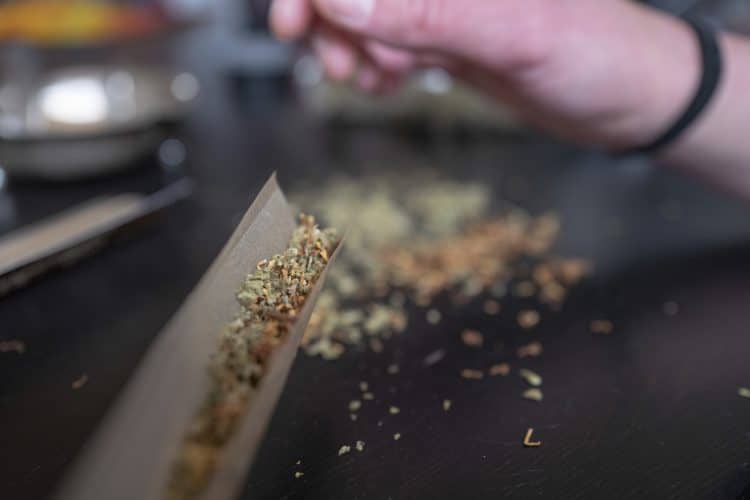Like so many things, those tiny packs of rolling papers you keep in your wallet for when you want an impromptu doobie are more than meets the eye. From exotic ancient civilizations and cultures, through the mountains of Spain, and then onto the shelf of your local favorite smoke shop, rolling papers have had a wild ride through the ages.
Origins of Rolling Papers
More or less, the original evolution of rolling papers is essentially tied together with the advent of European tobacco usage in the latter half of the previous millennium. However, there is evidence from ancient Chinese literature that mentions wrapping tobacco and medicinal herbs in some form of rice paper. This evidence is believed to have been dated as far back as the Tang Dynasty during the 8th century.
The New World & Back Again
Beyond ancient Chinese texts indicating rolling paper usage during that time, the next time rolling papers became a significant part of popular society was the late 15th century in Europe. At that time many nautical explorers, including Columbus, were returning back to Europe with large bounties of exotic goods–including tobacco and tobacco leaf-wrapped cigarillos from the natives in Hispaniola and subsequent conquered American lands.
As was with most things exotic and new, it immediately belonged to the rich and ruling classes. Cigarillos became a common form of smoking tobacco wrapped in paper at that time. Aristocrats would of course dispose of their cigarillo remains on the ground, prompting those less-fortunate to retrieve them. The cigarillo “shorts” were then re-rolled with whatever type of paper peasants, paupers, and gypsies could find.
Alcoy
The process of rolling loose tobacco into a small piece of paper eventually spread to the municipality of Alcoy, Spain. This area was already known to have had some papermaking influence brought to it from the Spanish Moors and eventually established itself as the paper hub of Spain.
Once the common-man practice of smoking tobacco out of rudimentary sources like newspaper stock was introduced to the high-quality papermakers of Alcoy, rolling papers dedicated primarily to tobacco were introduced.
France
By the 17th century, rolling and smoking tobacco had become widespread across parts of Europe. French soldiers returning home from Spain also brought rolled tobacco back home with them. Once the 1800s came around, the industrial revolution spurred with it the mass production of rolling papers.
19th Century
Once the popularity of what were now deemed “cigarettes” reached to the later half of the 19th century, innovations like rolling mills and machines had been invented to mass produce rolling papers much more efficiently.
These innovations were able to put more cigarettes into more hands at a much faster and affordable clip, thereby infiltrating all levels of society.
Rolling Papers in the 20th Century & Beyond
Once the 20th century rolled around, tobacco and tobacco products such as rolling papers became a massive industry with lots of competition and product choices. Nowadays, the RYO (roll your own) market is super massive and expected to eclipse an estimated $10.5B in 2028.
Factors such as the high cost of retail cigarettes and the rise of cannabis usage during this time have contributed significantly to this industry. Since the 1960s dawn of counterculture, a wide variety of rolling paper options have been created and geared towards cannabis smokers rolling (and even packing) their own joints, blunts, and blunt wraps.
 Rolling Paper Compositions
Rolling Paper Compositions
Simple innovations such as creating the very rolling paper booklet form inside your beat-up old wallet were also a major development just over a century and a half ago. Previously smaller pieces would have to be hand-cut by smokers from a much larger sheet each time. Nowadays, smokers have an abundance of choices.
Fibers
The fibers of rolling papers include softwood pulp paper and other “ragwood” (nonwood) materials. Each of these options are
- Flax – derived from the plant of the same name, flax is a natural fiber that has a decent toughness to it.
- Rice – Often seen as the most additive-free rolling paper option, rice papers burn slow and are super thin
- Hemp – hemp is basically an industry standard now due to its often organic nature that is also tough, burns slow, and typically features little-to-no additives
- Blunts – made from nicotine-rich tobacco, blunt paper is much thicker than traditional rolling papers and burns slow. Often contains many additives.
Additives
In order to get what they deem the right consistency and look, rolling paper manufacturers add many different additives to their rolling papers–often to the detriment of the very smokers that use them.
Bleaching is a common practice of adding chemicals to the plant fibers to get them a nice white consistency, as well as to make them burn slower. These potentially harmful additives include:
- Calcium carbonate
- Magnesium carbonate
- Titanium oxide
- Sodium potassium tartrate
- Potassium citrate
- Polyvinyl alcohol glue
In recent years, the popularity of several rolling paper brands promising to be nothing but all-natural and organic have been influential in countering the many additives that have traditionally been a part of rolling papers. Hemp and tobacco-free options are also very popular with cannabis smokers in order to avoid adding these harmful additives to their natural herbs
Rolling a Joint
Rolling papers have always been right alongside tobacco for centuries, but in the 20th and 21st centuries, cannabis usage has increased and so has rolling paper consumption.
U.S. cannabis legalization
With the weed industry in the U.S. continuing to grow each time another new state legalizes cannabis usage, people are smoking a lot more joints and blunts.
Rolling your own joint has always been a part of the cannabis experience going back to the Roaring 20s and into the turbulence of 60s counterculture. From this trajectory, it’s easy to now say that the rolling paper industry is tied to the advent of cannabis legalization in the U.S. during the 21st century.
Types of Rolling Papers
Rolling papers have evolved for the better over the last 2 decades or so. From more health-conscious fibers and materials to better ways to roll and smoke, there’s certainly been some innovations.
Traditional joint papers
A book of 24 rolling papers is a mainstay, but the many different varieties are not. Everything from custom colors and images, exotic flavors, and joints the size of your forearm are now available at the local smoke shop or online seller for anyone looking for something different. Organic options are also extremely popular nowadays.
Blunts & Wraps
Gutting a cigar, filling the remaining cigar paper with weed, and rolling it up like a joint is a popular practice here in the U.S. and it still continues on due to the popularity in hip-hop culture.
Traditional slow-burning blunts and their blunt wrap brethren are similar in their consistency and performance, however the blunt wrap is a flat sheet to roll cannabis, with no actual loose tobacco within it.
Pre-Rolled cones
Sometimes smokers just don’t have the time or energy to roll a fatty. That’s why innovations like the pre-rolled cone make all the difference.
Cones or pre-rolls as they’re known, are already assembled into the conical shape with a paper filter at the end. Smokers can then load-up already ground-up cannabis into the cone with a stick or pen until the cone is filled with herb. This type of product has seen a rise in popularity the last 10 years or so due to its simplicity and ease-of-use.
Rolling Papers Past & Present
Chinese monks recounted in their sacred texts as to the wonders of their rice-paper wrapped “natural herbs”. Your cousin Eric showed up to your house in his Honda Civic recounting the time he smoked a 24K gold joint with some friends at a party last week. Some would say the more things change, the more they stay the same.
It’s really just plain old innovation that is mostly responsible for the development, popularity, and proliferation of rolling papers in modern society. Innovation that includes the evolution and acceptance of a formerly unknown plant known as tobacco into all ranks of European society.
As well as innovation that also correlates to the dawn of U.S. and subsequent worldwide cannabis countercultures in the 20th and 21st centuries.

 Rolling Paper Compositions
Rolling Paper Compositions










